Over the past two weeks, in addition to attending the concert I filmed of Steve Sweeting, Coco Zhao, and Jeremy Moyer, I've been to the Arts District of 50 Moganshan Road twice. The first time was to catch the opening of a show featuring artworks and a performance by my colleague Zhang Jianjun, otherwise known as JJ. The second time was today, when I took my daughter and a colleague named Eduard here visiting for the first time to see some of the exhibits. Both times I visited the Shanghart Galleries where some very interesting exhibitions are now on display.
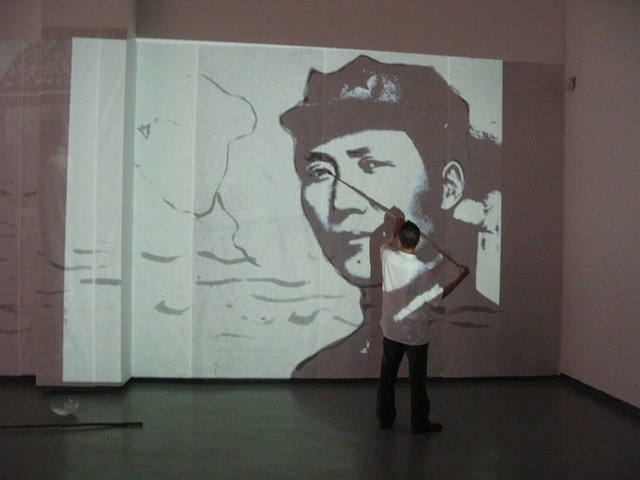
Zhang Jianjun "painting" Mao's portrait with water during his solo performance "Water"
JJ's show opened on Sept 6 and I was there to witness his performance piece called "water". This involved the projection of several historical photos of famous Chinese political figures, including of course Chairman Mao, on a blank wall while JJ used water and a large brush to paint images on the wall. These images faded along with the projections and were then written over or juxtaposed with each other to form a watery impression of recent Chinese history. He used water as a motif throughout the performance, painting waves and also projecting images of waves on the wall along with the historic figures. Two projectors were running at the same time, casting the figures of Mao in various guises, as a young revolutionary and then as an older man swimming across the Yangzi River. At one point in the show, JJ spent a lot of time water-painting an image of young Mao, which was juxtaposed with a fading outline of the figure of Liu Shaoqi. As a historian of modern China I was deeply touched by JJ's show, which conjured forth the shifting memories of the confusing panorama of political movements and figures that influenced China in the 20th century, including famous warlords such as Wu Peifu and early revolutionaries such as Li Dazhao and Sun Yat-sen. There were also many family portraits of these figures, all castaways upon the watery tide of history. The performance also suggested the theme of whitewashing which has been so prevalent in China's modern history, especially during the Mao years when figures such as Liu Shaoqi were "erased" from the public eye after they fell from grace during the Cultural Revolution. Water being dark and treacherous, but also tender and light, JJ's performance highlighted the ambiguities of these figures who made their mark on China.

Over at the Shanghart Gallery, there are two exhibitions. One is called "Follow! Follow! Follow!" (跟随! 跟随! 跟随!) by artists Ji Wenyu and Zhu Weibing. My daughter Sarah enjoyed this exhibit and I had to keep her from touching the artworks as it consists of several sets of toy-size soldiers and people made of thread and cloth. One set of people dressed in identical taichi-style outfits is climbing a long mountain path. There are two actually--one group is going up the mountain, the other coming down. They are all following each other in lockstep.
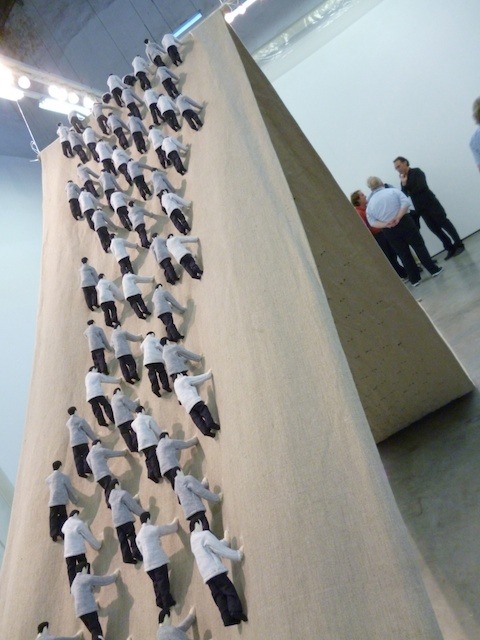
Perhaps this is a commentary on contemporary society or perhaps a depiction of the utopian aspirations of Chinese socialism in the previous era, or maybe it's just a take on the human condition in general (this is my fallback position when discussing artworks). In another installments, paratroopers parachute down to the floor, while another unit of soldiers guards a sacred tissue paper.
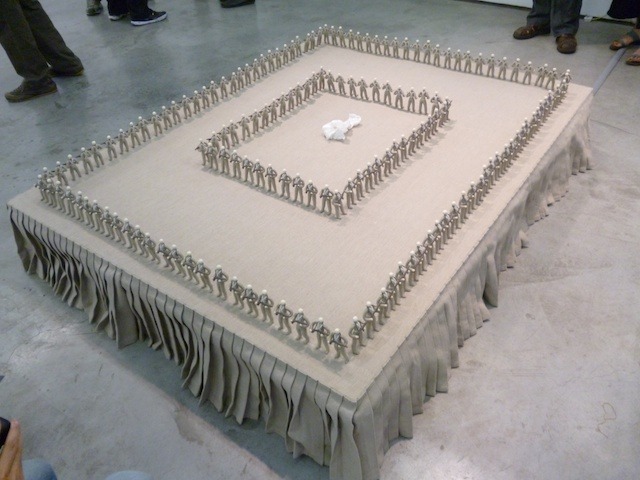
This installment came with soldierly music when I first attended, but today the music was absent, and when asked why, the curator admitted that it was out of batteries.

In the other Shanghart gallery, there is a special exhibition called Water Works by three artists, Geng Jianyi, Wu Shanzhuan, and Yang Fudong. Geng Jianyi's installation involves going into a dark room to see the projection of a living room scene covered in tin foil through a pinhole into a black box. My daughter was too scared to stay in the dark room for long, but she enjoyed the silvery living room.
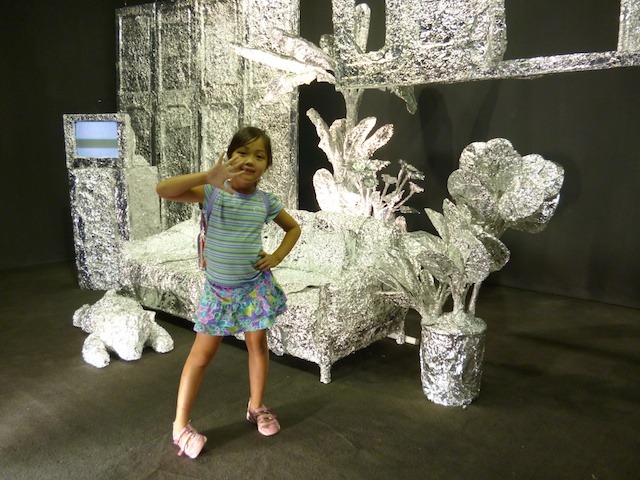
Was this a comment on the mundane condition of modern urban life and our collective obsession with television and projected images standing in for real life? Maybe so.
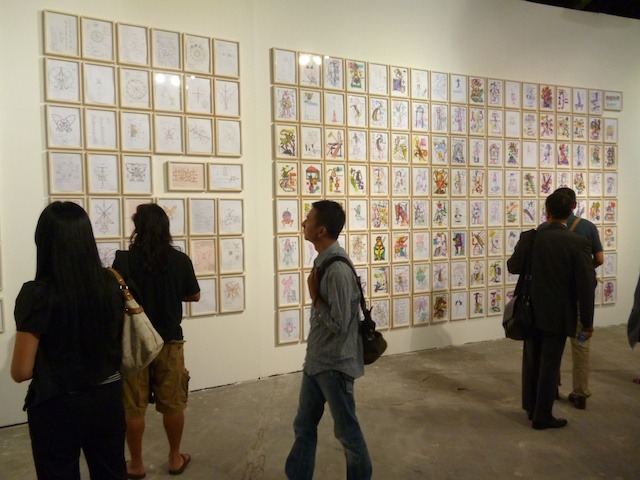
Wu Shanzhuan's artwork was displayed on a large curved wall in the hall, and consisted of over four hundred drawings, some very colorful, playing on a theme he calls the "butterfrog" which is half butterfly, half frog, but also morphs into somewhat obscene scenes of male-female copulation. There were also quite a lfew hydrological units of the male species depicted in this pseudo-scientific series of images, connecting to the "water works" theme.
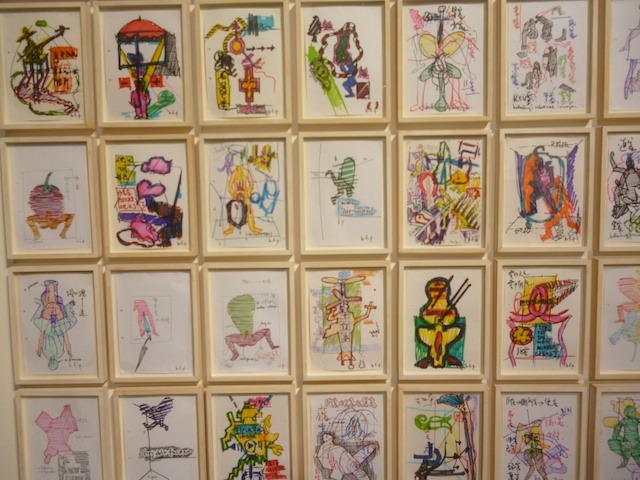
Yang Fudong, who has made a name for himself through his filmmaking efforts, offered a film, shown in a dark room, along with some painted images on display of the figures in the film. The film is around 20 minutes long and involves several characters moving through a desolate wintry landscape that includes a few deer and a horse. One of the characters seems to be a warrior, another a beautiful maiden from ages gone by, and there is also a thin man and a young woman who look like ghosts out of the 1920s. The film doesn't have an obvious narrative but is meant to invoke the ghosts of the Chinese past and juxtapose them in odd ways. This seems to be a common theme in contemporary Chinese art.
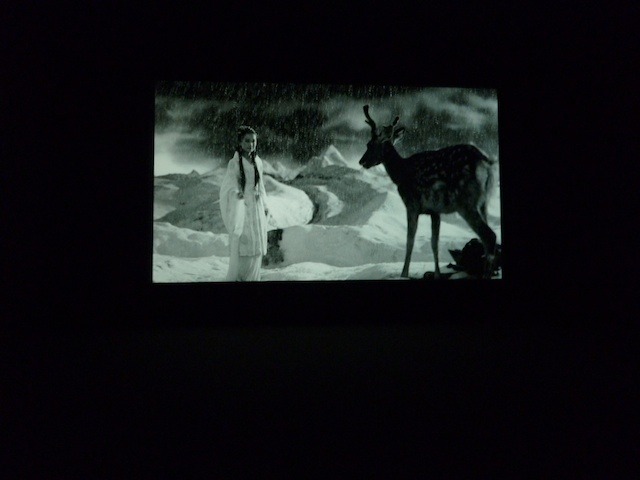
Speaking of which, one gallery worth checking out is the OV gallery in Building 4 Room 207. The theme of their current show is "Learning from the Literati." Rebecca Catching, the gallery's director, took us on a tour of the artworks in this small, cozy gallery. The first thing one notices is a huge swatch of charcoal and bones on the floor looking vaguely like a stroke of Chinese calligraphy. Sarah noticed footprints in the piece and immediately made some of her own. The artist Shi Jincong doesn't seem to mind as he did not request that the piece be fenced off, and some of the footprints belonged to him. Another piece that Rebecca introduced us to was called "A Romantic Person" by artist Wang Taocheng, a Shanghainese artist now living in Germany. It was based on experiences he had living in a community in the Hongkou District of Shanghai. The piece is a long scroll in the old Chinese tradition with images and poetry mixed with text, and it reads from right to left. It tells a loosely connected set of stories about the artists life and those of his neighbors. According to Rebecca, the artwork depicts his dream of losing himself in the poetic life of the ancient literatus, while the mundane realities of Shanghai neighborhood life continue to intrude upon his reveries. In one scene, a neighboring woman scolds her son for wanting to marry a girl who she thinks is just after their home, while the father skulks around the room eating his noodles. A very typical Shanghai scene. I really loved this piece and would be happy to take it home if I could afford it.
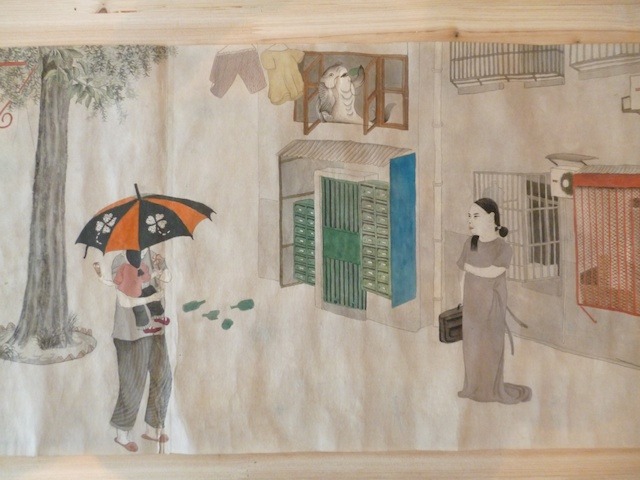
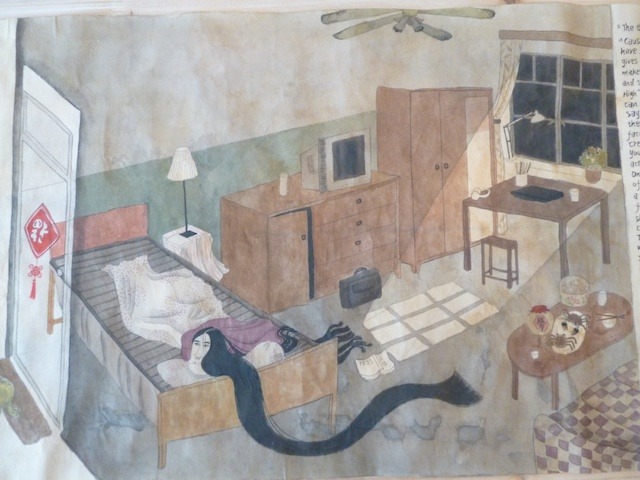
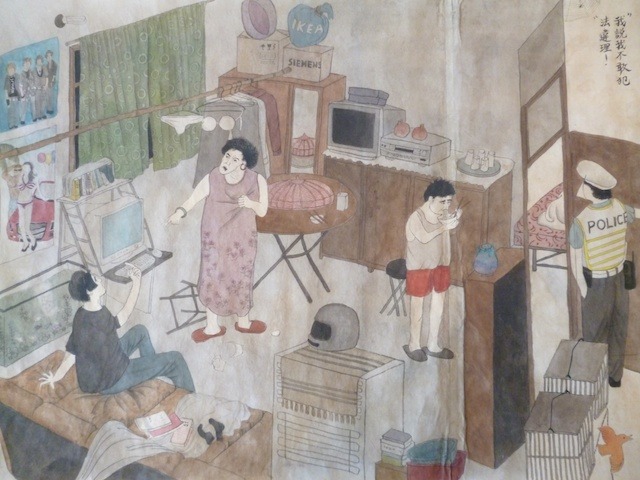
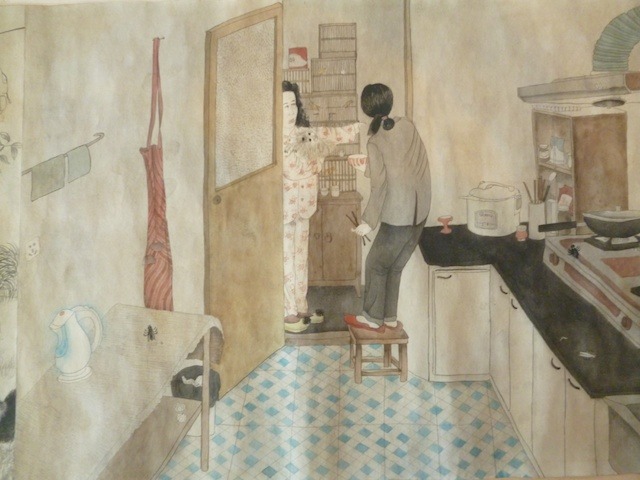
There were other artworks invoking past and present, such as a set of landscape paintings in the shanshui tradition by Chai Yiming, which from afar look very much like Song or Ming dynasty vertical landscapes with mountains and streams, until one gets closer and finds many contemporary images intruding in these landscapes, such as helicopters. There are also strange little faces and figures permeating the landscape blended artfully into the trees and streams.

In an adjoining gallery showcasing some designwork by Japanese and Taiwanese artists, Sarah tried her own hand at drawing, inspired by the painting of a cat with huge eyes.
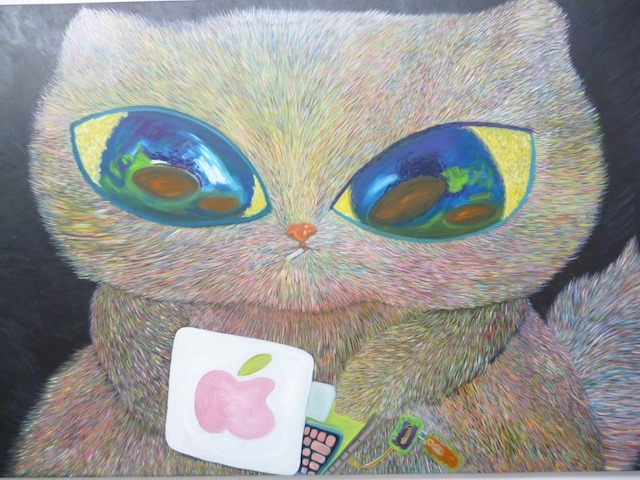

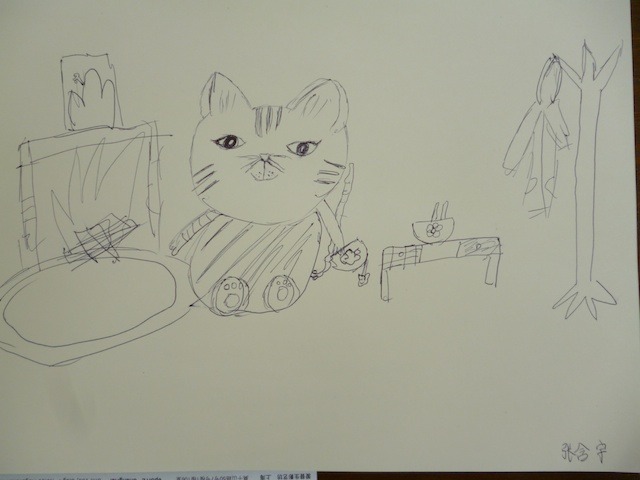
Keeping a seven year old from getting bored during a visit to art galleries, even ones as adventuresome as those on Moganshan Lu, isn't easy.
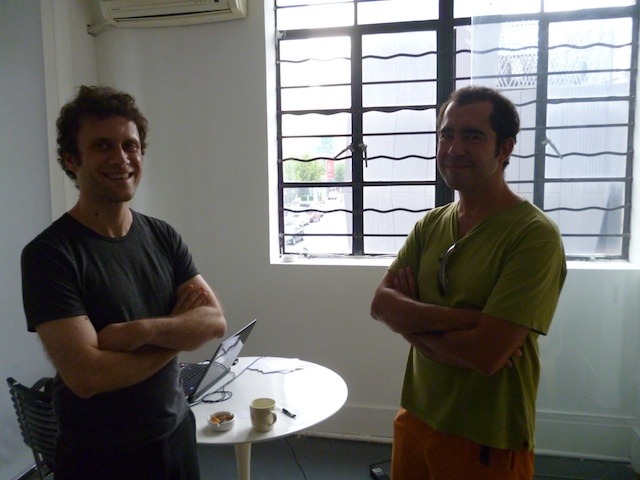
Roberto and Eduard
Our final gallery of the day was Galleria Dell'Arco run by Roberto Ceresia. Roberto was on hand there to explain the works of the artist Wang Sishun displayed in his gallery. An '80s generation artist, Wang graduated from the Beijing Central Arts Academy and was an assistant to Cai Guoqiang, one of China's most famous performance artists. His exhibition consisted of several low-key artworks including a piece of 24-karat gold that he molded into a human-like figure with his teeth. There was also a half-worked ball of clay which he'd done as a performance piece according to Roberto, evoking a memorable if secret night he'd had with a female body in the dark, he worked the clay blindfolded.
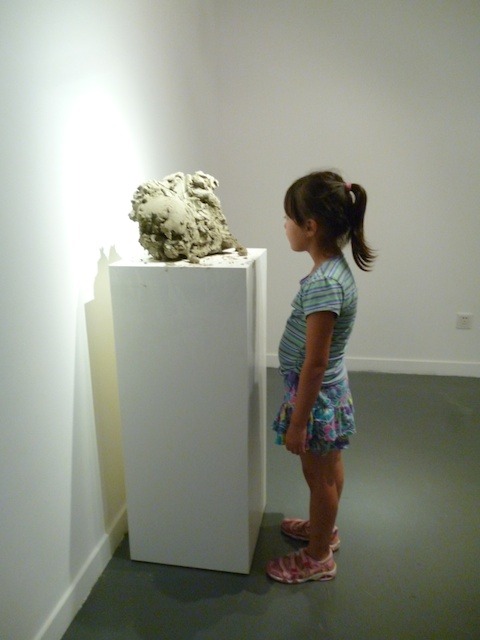
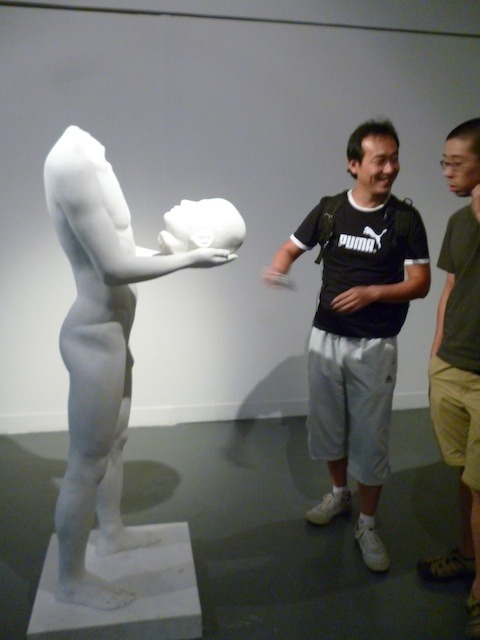
A statue of the artist is prominently displayed in the center of the gallery. The statue reaches its hands out in a gesture of giving, and is holding its own head in its arms.
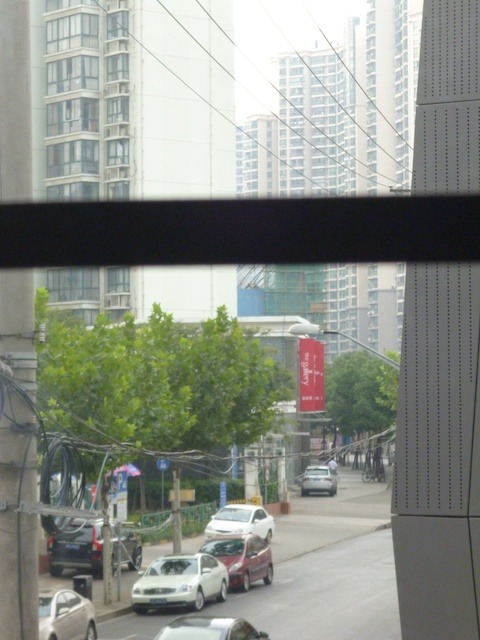
Finally there is a photo in the back room of a street scene--actually the scene that you see when you look out the window of the gallery onto Moganshan Road. Roberto pointed out a man standing on the road, and when we looked out the window we saw the same man in the same position. It turns out he was hired to stand there for a month as part of the art show. Roberto told us that the artist gets much of his inspiration from dreams that become his artworks. I suppose it wouldn't be going too far to say that artists represent the "collective psyche" of a people, so examining these artworks in detail is a fascinating way to explore the contemporary Chinese subconscious.

I've always been impressed by the quality of the galleries, the curators who are always happy to show me around and explain the artists' works, and just enjoy the space of this area every time I go. So I'm always surprised that there aren't more people milling about the area. Maybe it's the distance from other happening spots in the city, maybe it's the lack of amenities--there's only one decent cafe in the area--but whatever the reason, I encourage people living in or visiting the city to vote with their feet and spend some time wandering the galleries of this district.